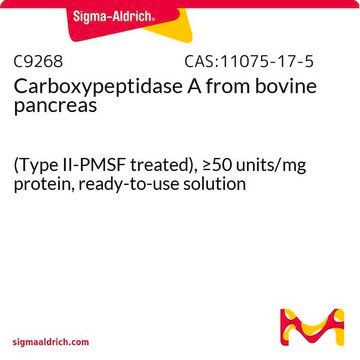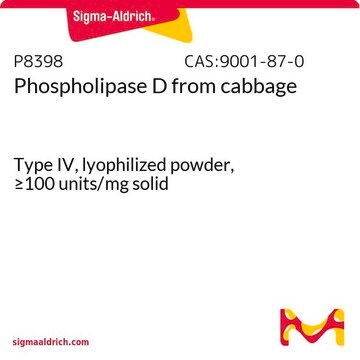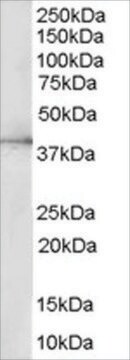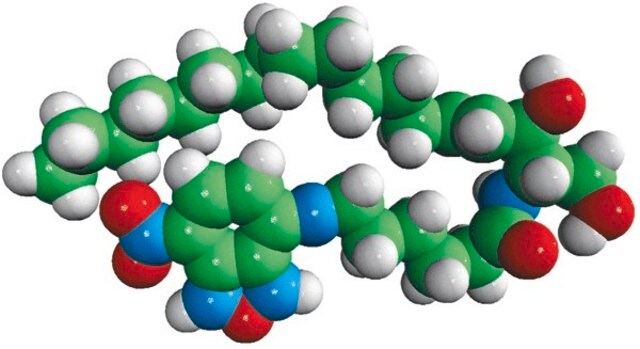추천 제품
양식
buffered aqueous solution
분자량
size 3858 bp
박테리아 선정
kanamycin
복제개시점
pUC (500 copies)
펩타이드 절단
no cleavage
촉진제
Promoter name: OXB18
Promoter activity: constitutive
Promoter type: bacterial
리포터 유전자
none
배송 상태
ambient
저장 온도
−20°C
일반 설명
PSF-OXB18 - VERY STRONG E.COLI PROMOTER PLASMID that allows the production of protein in bacteria. The plasmid contains our standard multiple cloning site downstream of the OXB18 promoter. We developed this promoter in house by modifying the RecA E. coli promoter so that it no longer repressed by LexA and also incorporates a series of mutations that make it slightly weaker. This is part of an extended product range of bacterial promoters with different transcriptional activities. OXB20 is the strongest in this range and OXB1 is the weakest. This plasmid vector does not require an inducing agent for activity.
Promoter Expression Level: This molecular cloning vector contains a very strong constitutive E. coli promoter that was derived from the RecA promoter by random mutagenesis. It is part of our constitutive bacterial promoter range. This promoter (OXB18) shows the very high levels of expression in the range with OXB1 showing the lowest level and OXB20 showing the highest level of expression. This vector require no inducing agent for expression.
Promoter Expression Level: This molecular cloning vector contains a very strong constitutive E. coli promoter that was derived from the RecA promoter by random mutagenesis. It is part of our constitutive bacterial promoter range. This promoter (OXB18) shows the very high levels of expression in the range with OXB1 showing the lowest level and OXB20 showing the highest level of expression. This vector require no inducing agent for expression.
애플리케이션
Cloning in a gene: PSF-OXB18 - VERY STRONG E.COLI PROMOTER PLASMID has been designed to be compatible with a range of cloning techniques. The multiple cloning site contains a range of standard commonly used restriction sites for cloning. Using these sites genes can be inserted using standard cloning methods with DNA ligase. Other methods such as ligase independent cloning (LIC) Gibson Assembly InFusionHD or Seamless GeneArt can also be used and because all of our plasmids are based on the same backbone the same method can be used for cloning into all of our catalogue vectors.
Multiple cloning site notes: There are a few important sites within the MCS. These include the NcoI site the XbaI site and the BsgI and BseRI sites. The NcoI site contains a start codon that is immediately downstream of both a Kozak and Shine-Dalgarno ribosomal binding site. These allow for optimal positioning of genes when the start codon is placed in this location. If this is not required and you wish to use a downstream site for gene cloning you can remove the NcoI site by cleaving the plasmid with KpnI.
The XbaI site contains a stop codon. This stop codon is positioned in a specific position in relation to the BsgI and BseRI sites that are immediately downstream. When either BseRI or BsgI cleave the plasmid they produce a TA overhang from the stop codon in the XbaI site that is compatible with all of our peptide tag plasmids cut with the same sites. BseRI and BsgI sites are non-palindromic and cleave a defined number of bases away from their binding site.
Whenever we clone a gene into our multiple cloning site we always position the start and stop codon in the same positions in the MCS. If the start and ends of the genes are not compatible with NcoI and XbaI we extend the sequence to the nearest external sites but keep the start and stop codons locations consistent.
Multiple cloning site notes: There are a few important sites within the MCS. These include the NcoI site the XbaI site and the BsgI and BseRI sites. The NcoI site contains a start codon that is immediately downstream of both a Kozak and Shine-Dalgarno ribosomal binding site. These allow for optimal positioning of genes when the start codon is placed in this location. If this is not required and you wish to use a downstream site for gene cloning you can remove the NcoI site by cleaving the plasmid with KpnI.
The XbaI site contains a stop codon. This stop codon is positioned in a specific position in relation to the BsgI and BseRI sites that are immediately downstream. When either BseRI or BsgI cleave the plasmid they produce a TA overhang from the stop codon in the XbaI site that is compatible with all of our peptide tag plasmids cut with the same sites. BseRI and BsgI sites are non-palindromic and cleave a defined number of bases away from their binding site.
Whenever we clone a gene into our multiple cloning site we always position the start and stop codon in the same positions in the MCS. If the start and ends of the genes are not compatible with NcoI and XbaI we extend the sequence to the nearest external sites but keep the start and stop codons locations consistent.
서열
To view sequence information for this product, please visit the product page
분석 메모
To view the Certificate of Analysis for this product, please visit www.oxgene.com
관련 제품
제품 번호
설명
가격
Storage Class Code
12 - Non Combustible Liquids
Flash Point (°F)
Not applicable
Flash Point (°C)
Not applicable
가장 최신 버전 중 하나를 선택하세요:
Geoffrey M Lynn et al.
Nature biotechnology, 33(11), 1201-1210 (2015-10-27)
The efficacy of vaccine adjuvants such as Toll-like receptor agonists (TLRa) can be improved through formulation and delivery approaches. Here, we attached small molecule TLR-7/8a to polymer scaffolds (polymer-TLR-7/8a) and evaluated how different physicochemical properties of the TLR-7/8a and polymer
Diana Romero et al.
Carcinogenesis, 37(1), 18-29 (2015-10-28)
Dickkopf-3 (Dkk-3) is a secreted protein whose expression is downregulated in many types of cancer. Endogenous Dkk-3 is required for formation of acini in 3D cultures of prostate epithelial cells, where it inhibits transforming growth factor (TGF)-β/Smad signaling. Here, we
Jin-Gyoung Jung et al.
PLoS genetics, 10(10), e1004751-e1004751 (2014-10-31)
The Notch3 signaling pathway is thought to play a critical role in cancer development, as evidenced by the Notch3 amplification and rearrangement observed in human cancers. However, the molecular mechanism by which Notch3 signaling contributes to tumorigenesis is largely unknown.
Alexander C Cerny et al.
PLoS genetics, 11(10), e1005578-e1005578 (2015-10-29)
Recycling of signaling proteins is a common phenomenon in diverse signaling pathways. In photoreceptors of Drosophila, light absorption by rhodopsin triggers a phospholipase Cβ-mediated opening of the ion channels transient receptor potential (TRP) and TRP-like (TRPL) and generates the visual
활성 필터
자사의 과학자팀은 생명 과학, 재료 과학, 화학 합성, 크로마토그래피, 분석 및 기타 많은 영역을 포함한 모든 과학 분야에 경험이 있습니다..
고객지원팀으로 연락바랍니다.








